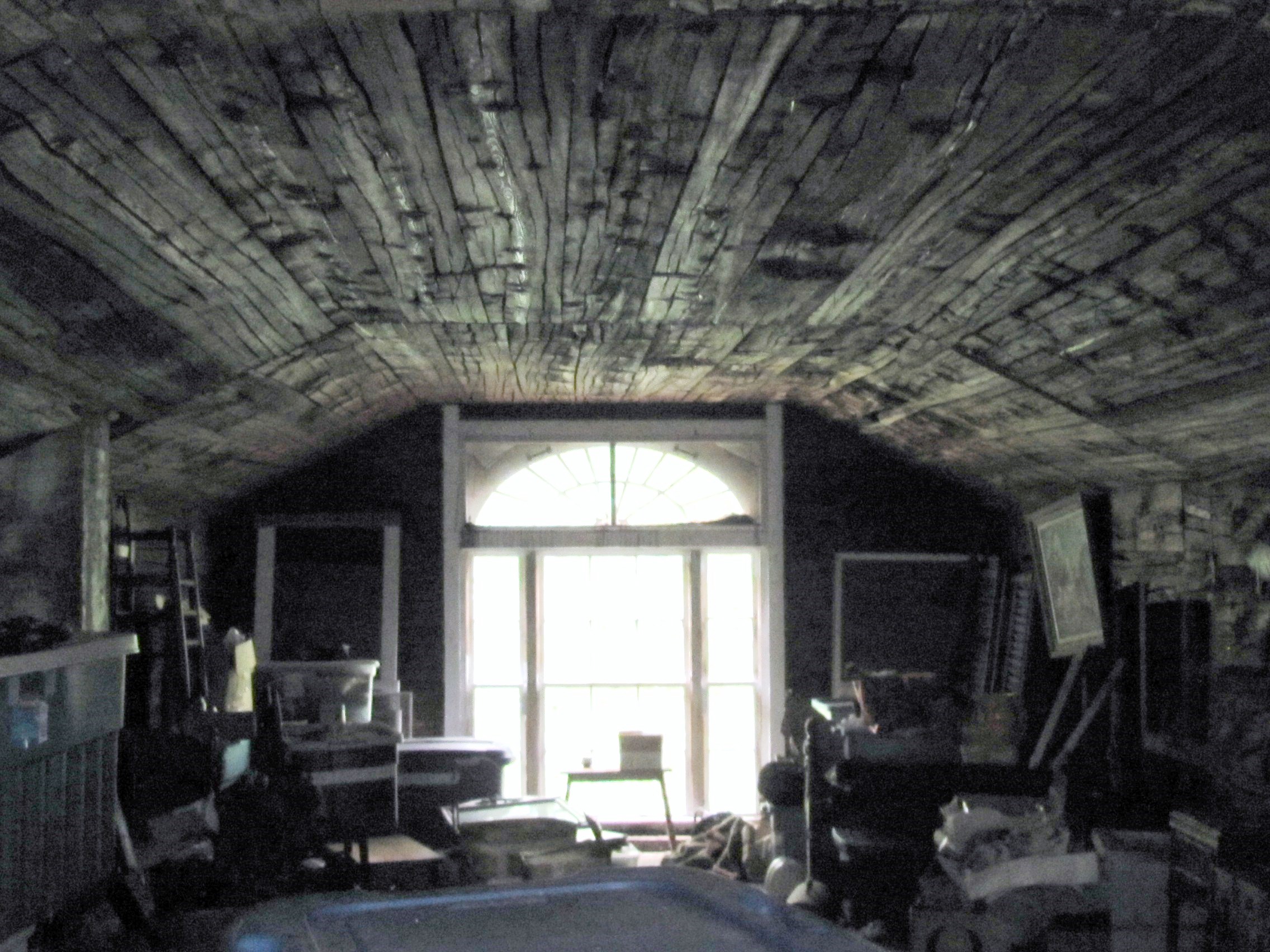Here’s another story from Richard Whitcomb. This is a familiar story for me. It reminds me of the hundreds of attics I have picked in the last 50 years. Accumulations like this will never exist again.
“Our Attic”
“My dictionary defines an attic as a room immediately under the roof of a house, and so it was in our home in Spencer Hollow. There were three stairways in the old house, one above another from the cellar to the attic. The top flight was very creaky and well worn and not finished off.
“The attic itself was one room from one end of the house to the other, lighted by a window at each end. It was the most neglected room because it was used only for storage and all sorts of odds and ends and cast-off articles too good to throw away, but of no practical use at the time they were squirreled away out of sight and out of mind. It included old key skates, shoe skates, clamp on skates.
 “Also a scrub board, wash ringer, bedsteads, a couple of spinning wheels, etc. Trunks of old clothes which my daughters and girl friends used to dress up in added to the clutter.
“Also a scrub board, wash ringer, bedsteads, a couple of spinning wheels, etc. Trunks of old clothes which my daughters and girl friends used to dress up in added to the clutter.
“A large carpenter’s work-bench stood across the east end of the room in front of the window. I can only guess who used it, but since at one time it was the poor farm I wonder if some of the inmates used it; out of the way, dry and perhaps warmer than quarters in the barn.
“I remember several pieces of tin-ware arranged along a shelf beside the stairs – one was a two quart milk can with handle and cover with the name P.W. Gould on the handle indicating the name of one of the Goulds Mills family. My grandfather Gutterson lived in the area for a few years and could have sold Mr. Gould milk in the milk tin.
“There was also a large box full of song books belonging to my grandfather who had been active in singing schools in Andover in his younger years. Some of the books were for ‘shape note’ singing, a style in the early 1800s having a different scale. There are groups around the country including a local group to which my daughter, Ann, belongs who have revived this style of singing.
“An implement I never saw used was a good seed planter to be drawn by one horse, having two handles, a big wheel, a seed box with several pieces of tin with different size holes for different size seeds that fitted into a slot in the bottom of the seed box. When Ann sold the farm she sold several articles to Bob Farnsworth who put them in one of his local auctions. There was no trademark on the planter or any means of identification, but I found one in the Bellows Falls Historical Society Museum almost identical to it which was made by the Albany Machinery Co. in Albany, N.Y.
“Another mystery which Ann discovered was a partial set of dishes which she now uses on special family occasions. As far as we know they had been in the attic since 1911, the year my folks moved to the farm.
“My grandfather Gutterson was a widower and moved to the farm about the same year and I believe he brought them with him. When Ann discovered them they were carefully packed with a page from a 1911 Springfield Reporter between each plate! Had they belonged to my parents I’m sure they would have used them. There being no one alive now to ask about their origin we can believe as we feel. This old attic has held many items relating to the past, and Ann’s cleaning out the contents from four generations was a timely, ambitious endeavor.
“Most houses built nowadays don’t accommodate an attic, so such collections of the past don’t exist – another change in our customs.”
A note from Ron: I bought the seed planter mentioned in this story at a Bob Farnsworth auction. The seed box was about eight feet long, and would plant several rows of corn in one pass. It was made by the Shakers. I sold it to a Shaker dealer.
This week’s old saying I heard years ago from an old Vermonter. We were on his ground floor, me buying antiques, when he said, “Let’s go up attic.” I said, “That’s an odd expression.” His reply, “You go down cellar, don’t you?”